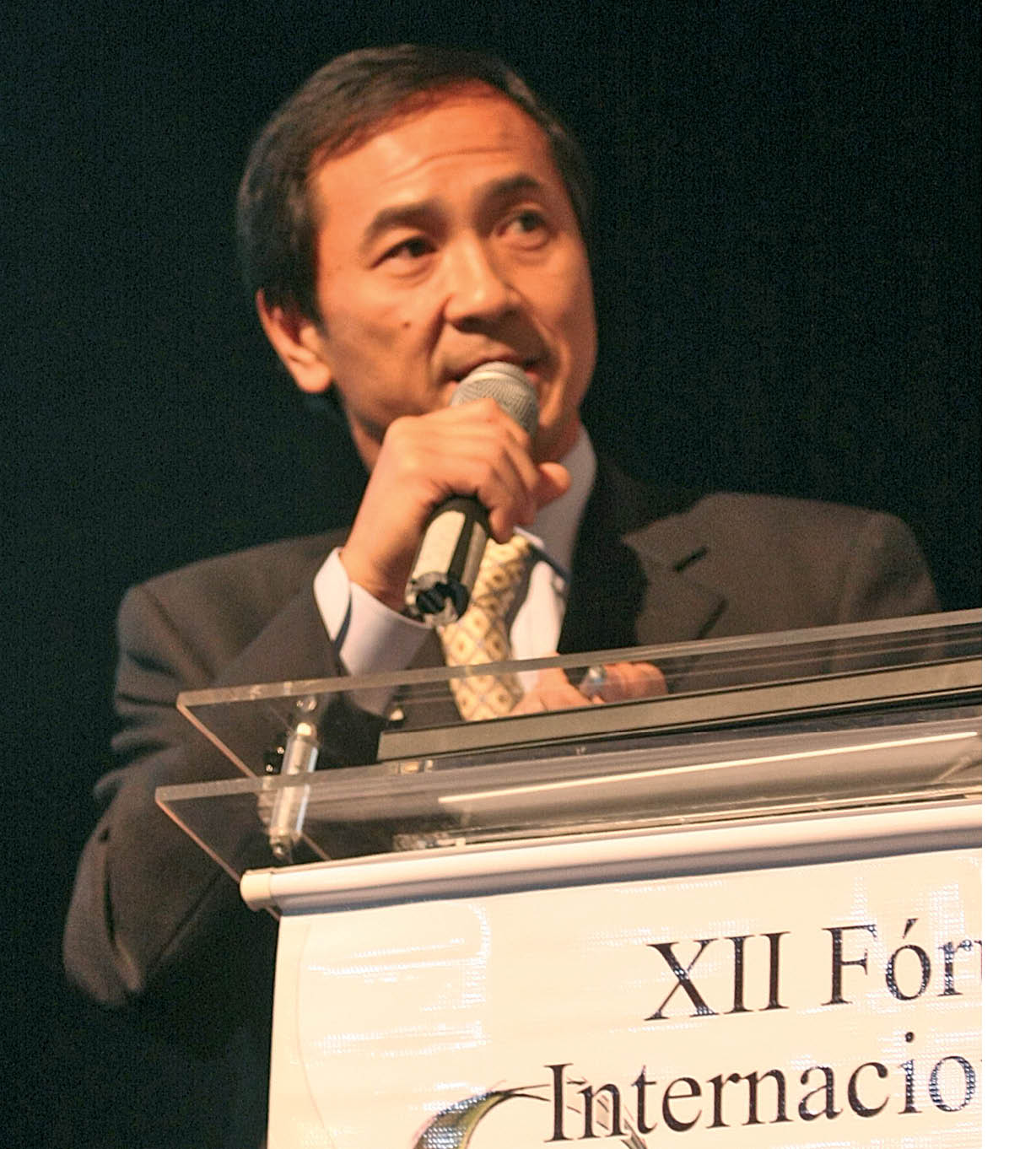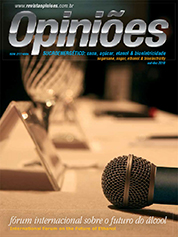Pedro Isamu Mizutani
President of Cosan - Açúcar e Álcool
Op-AA-26
Global recognition of ethanol
In 1936, we had only one mill in the city of Piracicaba, which crushed about 4 million tons. Nowadays, Cosan comprises 23 mills and this year we predict the crushing of about 60 million tons of sugarcane. Cosan’s history is that of a pioneer. It was the first mill to enter an international partnership, with British company Tate & Lyle, which had a stake in the terminal in the port of Santos.
Soon thereafter, a partnership was set up with the Tereos and Sucden groups. We were also pioneers in issuing bonds and shares in the São Paulo and New York Stock Exchanges, along with perpetual bonds. We were the first to bring about the integration of the entire chain, from production to delivery of our products to the end consumer, by acquiring Esso.
Then, recently, in a binding agreement with Shell, we set up one of the largest companies in the country, with a market value around R$ 20 billion and expected revenues of R$ 50 billion/year. The group comprises five business pillars. Radar is responsible for managing agricultural real estate; Rumo runs the multimodal transportation, storage and shipping system; Cosan Combustíveis e Lubrificantes manages the Esso assets; Cosan Açúcar e Álcool manages the mills and distilleries, and lastly, there is Cosan Alimentos, which is responsible for marketing Da Barra and União products.
We are used to viewing our organizations as industrial units, but the actual value of the business in the sugar and ethanol industry is in agriculture, to which we destine 75% of our budget. Sugar, as our Werther Annicchino used to say, is made in the field. The industrial activity is merely a tool to transform sugar and ethanol into the end product. The trend in agriculture is undergoing considerable change, we must think in terms of sustainable agriculture, precision technology and diversification of professionals.
Nowadays, we use programs associated with satellite imagery, intelligent information systems, traffic control, next to many, many others. How could we manage 800,000 hectares of plantations without using state-of-the-art tools? I’m talking about an immense ocean of sugarcane.
Through satellite imagery we can geographically locate every plot on every farm, feed the database and detail information, monitor development, detect flaws in the cane plantations or problems of whatever nature in any specific area or region of the sugarcane plantations and undertake measures to correct them.
We can even estimate the quantity of sugarcane to be produced in any given plot. Thus, through this precision agriculture, we manage our plantations in our time and age. Agriculture is advancing in this direction day after day. We also operate an intelligent information development system. In the old days, agriculture only needed an agronomist.
 It consisted of planting sugarcane, watch it grow and harvest it. Nowadays, that is not all. We have production engineers, mechanical engineers and chemical engineers also in agriculture. Therefore, it is difficult to set up a sugarcane harvesting system without optimizing functions. We resort to the engineers and linear programming processes to bring about the changes in how to manage the plantations, to plant the crop and to harvest it using machinery.
It consisted of planting sugarcane, watch it grow and harvest it. Nowadays, that is not all. We have production engineers, mechanical engineers and chemical engineers also in agriculture. Therefore, it is difficult to set up a sugarcane harvesting system without optimizing functions. We resort to the engineers and linear programming processes to bring about the changes in how to manage the plantations, to plant the crop and to harvest it using machinery.
Cosan set out to be the first. Nowadays, many companies are on this same track. Agriculture today is no longer just agronomy. It consists of an automated system managed by the Agricultural Operations Center, in which all the tractors, harvesters and buses are monitored by a GPS system, by cell phone signals, in which the information sent is received in a control center, allowing running programs such as for advanced payment calculations, safety management and fleet maintenance management.
Agriculture today is technology at its best. Regarding sustainability, we see it as the balance between interests concerning the environment, society and the economy. In the past, only the economic issues were important. Nowadays, we really have to keep the balance between economic, social and environmental interests.
It is important to notice that it does not suffice to only privilege social or environmental issues. If one doesn’t make a profit for the company, there is no way to survive. Sustainability is a much debated issue at Cosan. The entire sugar and ethanol industry considers this issue a priority.
Continuing on sustainability, in our opinion we must pay attention to issues such as oil inventory reduction and rising costs of oil extraction; to global warming; to the myth of competition between food and energy; to the shortage of drinking water; to the quest for low carbon emission energy alternatives and to increasing demands related to sustainability criteria.
Until 2030, Brazilian CO2 emissions are expected to increase by 64%. One should notice that if it were not for the use of biofuels they would grow by 149% and that if we could increase the use of ethanol by more than the current trend, we could stabilize the emissions at the level of 17%.
As to the competition food versus energy: growth in the sugar and ethanol industry’s production is based not on expanding the use of land, but on continued gains in productivity. Sugar production increased by more than 50% just in one decade. Sugarcane’s productivity on average increased its productivity by 1.3% per year. There is an untrue myth involving the industry.
Regarding water, this is a very serious issue for the world, mainly in developed countries. China accounts for 20% of the world population, but produces only 3% of the drinking water, whereas Brazil has 3% of the population and produces 20% of all the drinking water in the world. We have installed closed circuits in our industrial units to reutilize water.
We used to utilize 5m3 per ton of processed sugarcane, currently we use 2m3 and we will make it to zero. I believe that in 5 to 10 years we will no longer use water from rivers, but rather only water generated by the sugarcane plantations themselves. Cosan and many other companies in the industry have issued sustainability reports, calculating the carbon footprint, seeking to reduce and mitigate carbon emissions in each phase of our production.
We have been selling ethanol to Sekab, Mitsubishi and Braskem – for the production of green plastic. We signed a memorandum with Amyris to produce diesel from sugarcane. We made direct investments in Fundação Estudar (“Study Foundation”) and encouraged the use of ethanol in test buses of the public transportation system in São Paulo. We have actively participated in the Environmental Protocol project and the requalification program for the workforce. In the 2009/10 harvest, 54% of the harvesting was done using machines.
The main challenges we face in the industry are: adopting mechanisms that view ethanol not only from the economic perspective; reducing international technical and tariff barriers that apply for sugar and ethanol as a global commodity; and transforming and consolidating ethanol as a global commodity.
We also must emphasize and disseminate the importance of agriculture; make considerable and continued investments in research to develop new technologies for using ethanol and sugarcane derivative products, seeking to broaden the use of current products and developing new products. We believe that in the near future there will be global recognition of ethanol.
In 20 years from now, the consumer will distinguish between a fossil and a renewable fuel, will know how to identify the difference between companies that operate in a sustainable manner and those that do not. The consumers of 20 years into the future are being born now, and they won’t be us. They will be our children and grandchildren. Our challenge is to accelerate this process and together achieve our goals.




